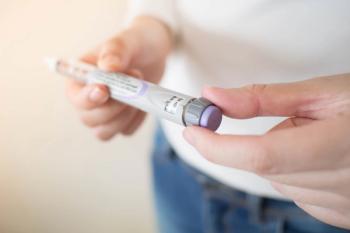
10 ways to prevent drug diversion
Studies have shown a high rate of abuse of prescription drugs by healthcare professionals, including pharmacists, when compared to street drugs, primarily because healthcare professionals can access prescription medications easily and often.
Courtesy: Shutterstock/jannoon028Recently, a nursing assistant in Vancouver, Canada, who had been diverting discarded drugs, died after self-administering what she likely thought was an opioid but was actually a neuromuscular blocking agent.
According to Institute for Safe Medication Practices (ISMP), the nursing assistant found an unlabeled syringe containing a clear solution in a biohazard box, injected the solution, and suffered immediate paralysis, respiratory arrest, and then death.
Editor’s Choice:
Studies have shown a high rate of abuse of prescription drugs by healthcare professionals, including pharmacists, when compared to street drugs, primarily because healthcare professionals can access prescription medications easily and often, ISMP wrote in the March 10 issue of its ISMP Medication Safety Alert! Acute Care newsletter.
“The systems for preventing and detecting drug diversion, and dealing with workers who are battling a prescription drug dependency, are clearly insufficient, given the current scope of the problem,” ISMP wrote. “Inadequate monitoring systems and lax controls leading to diversion also result in significant fines levied by the government.”
ISMP offers tips to help hospitals and health systems prevent drug diversion. They include:
- Expect diversion. “Given that one in 10 healthcare practitioners/workers will abuse drugs, take all the necessary steps to prevent and detect it. No news is NOT good news when it comes to drug diversion and abuse,” ISMP wrote.
- Secure controlled substances at all times. Before leaving the medication preparation area, secure vials containing leftover controlled substances yet to be discarded. Walking away to administer a dose or attend to a pharmacy task without securing the vial can invite diversion.
- Prohibit drawing more than a single dose of a controlled substance into a syringe; saving partial doses in syringes exposes the drug to possible diversion.
- Secure all controlled substance infusions in locked infusion pumps, and require a witness to observe the waste disposal once the infusion is removed from the pump.
- Secure controlled substances in the operating room, procedural areas, and anesthesia work areas during and between surgical cases.
- Require staff to verify dispensing and receipt of controlled substances. In areas without automated dispensing cabinet (ADC) storage, both the person delivering and the person receiving controlled substances should co-sign the appropriate record, and the drugs should be immediately secured.
- When using an ADC for dispensing and storage of controlled substances, activities should be tracked and reconciled using data available in the vault software.
- Know the federal, state, tribal, and local laws regarding pharmaceutical wastage of controlled substances, hazardous waste, and sharps, and choose the most appropriate and secure containers for safe disposal. “In patient care areas, use sharps/pharmaceutical waste containers with small openings that do not easily allow medication devices or waste to be shaken out,” ISMP wrote.
- When a larger sharps/pharmaceutical waste container must be used (e.g., OR, procedural areas), utilize video cameras nearby and regularly observe the monitors.
- Lock sharps/pharmaceutical waste containers to the wall or secure to other stationary equipment that cannot be easily removed from a clinical unit. “Secure all keys to replace a container, and limit access to just a few designated staff (or an external company that may collect and replace the containers),” ISMP wrote.
Newsletter
Pharmacy practice is always changing. Stay ahead of the curve with the Drug Topics newsletter and get the latest drug information, industry trends, and patient care tips.
























































































































